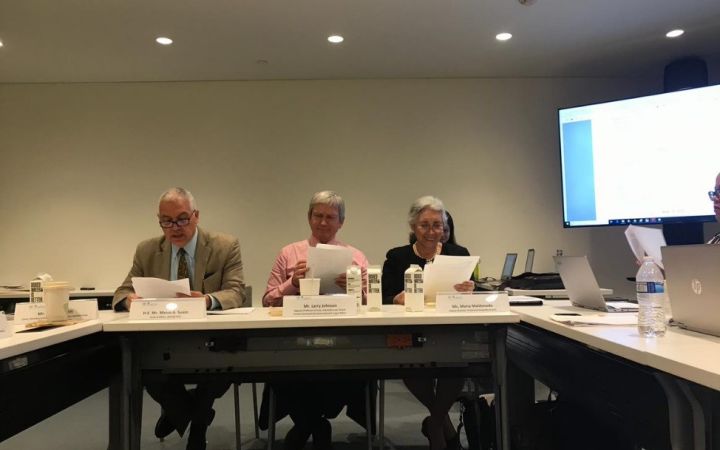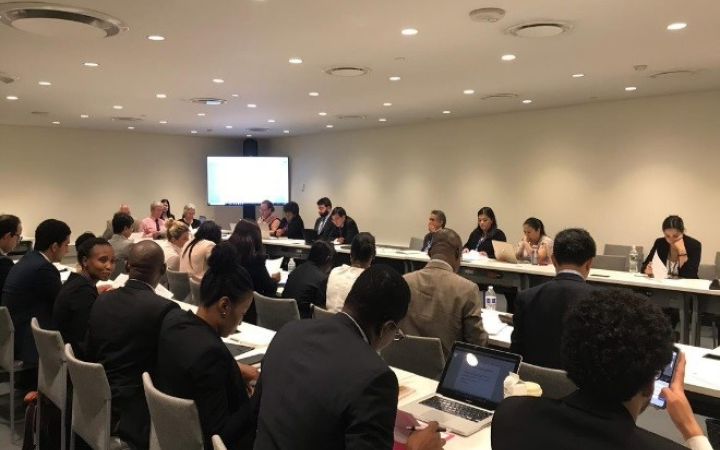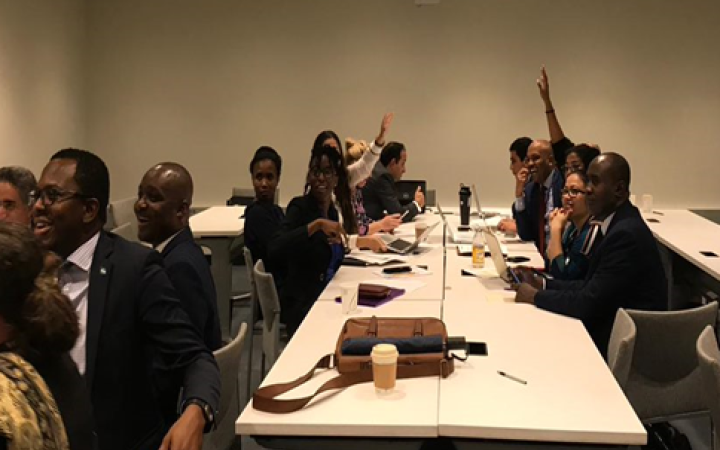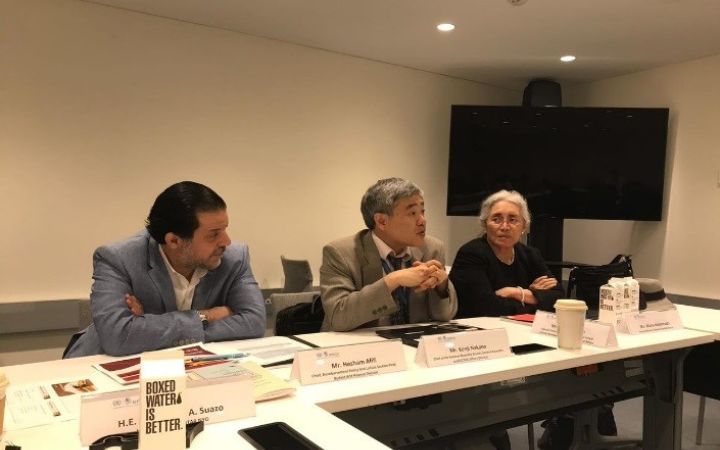Day 1: Structure, Drafting, and Adoption of United Nations Resolutions Seminar
25-26 June 2019, New York, USA - The United Nations Institute for Training and Research's (UNITAR) New York Office organized a two-day event, “Workshop on the Structure, Drafting, and Adoption of the United Nations Resolutions” on 25-26 June 2019 in collaboration with the Permanent Mission of Sweden programme “levelling the playing field” to the United Nations. The seminar was attended by approximately 30 delegates from Permanent Missions to the United Nations. Mr. Marco A. Suazo, representing UNITAR’s New York Office, presented the seminar and briefed the event’s theme of UN resolutions and presented the panelists.
Mr. Suazo expressed his appreciation for the generous support provided by the Sweden to the United Nations in New York, which allowed delegates from other Permanent Missions to the United Nations to attend the seminar free of cost. Mr. Suazo acknowledged Ms. Maria Maldonado, former Director of General Assembly Branch, and Mr. Larry Johnson, former Assistant-Secretary-General, Legal Affairs, for their presence and knowledge-sharing. Mr. Suazo also mentioned that during the second day of the seminar Mr. Hesham Afifi, chief of Reimbursement Policy and Liaison Section and Mr. Kenji Nakano, Chief of the General Assembly Branch, General Assembly and ECOSOC Affairs would be joining the workshop.
As the seminar began, participants from Permanent Missions briefly introduced themselves.
Session I (The Agenda of the Assembly) was led by Ms. Maria Maldonado. She explained how a resolution is prepared, and the process of proposing new items in the agenda. Additionally, Ms. Maldonado explained the system of corresponding official document numbers, and role of the General Committee. Participants raised key issues including the different characteristics of each stage, forwarding the item to the next session, decision-making processes and its publication by the General Committee.
Consequently, Session II (Preparing a Draft Resolution) started with Mr. Suazo’s introduction of the covered issues. Ms. Maria Maldonado introduced the parts of a draft resolution, the precedents of the similar resolutions and introduced the terminology. She followed with programme budget implications examples and concluded the session explaining the issuance of submitting a draft resolution. Ms. Maldonado went over the co-sponsors, who introduces the draft resolution, who coordinates the process, and the numbering of the draft resolution.
During Session III (Drafting of Resolutions, Negotiations and Submission), Mr. Larry Johnson defined the objectives, priorities, and options of a draft resolution. Mr. Johnson also spoke about the consultation process of co-sponsors and non-sponsors and explained the numbering of the draft resolution. Mr. Johnson described drafting preamble paragraphs, researching precedents of alike resolutions as well as their legal effects, the title of resolutions, operative language, and the programme budget implication (PBI) of resolutions from different parties’ viewpoints.
The panelists addressed the function and decision-making of the Fifth Committee and the Advisory Committee on Administrative and Budgetary Questions (ACABQ), the traditional and contemporary nature of L Documents, administration of trust funds, and the contrast between the General Assembly decisions and resolutions. Participators posed questions, namely about the stage in which PBI matters and the coordination mechanism for the budgetary administrative occurs.
Day 2: Structure, Drafting, and Adoption of United Nations Resolutions Seminar
Session III was followed by a break. After the break, the panelists proceeded to conduct a group exercise among the participants. The participants were separated into three groups and they were given the guidelines for drafting a mock resolution. The groups were instructed to work on their proposals. After delivering these ones to the panelists, the participants went home for the day.
The following day, Mr. Johnson, Ms. Maldonado led the first part of Session IV (Decision Making) on the logistics of the drafting process. The second part of Session IV, was led by Mr. Hesham Afifi, chief of Reimbursement Policy and Liaison Section and Mr. Kenji Nakano, Chief of the General Assembly Branch, General Assembly and ECOSOC Affairs.
During the first part of Session IV, Mr. Johnson described the difference between the decision-making system of the General Assembly and the Security Council. He also explained the decision-making mechanism for resolutions, on which Mr. Suazo provided further input. A thorough study of the rules and procedures of the General Assembly revealed participants how to use such procedures strategically.
Mock-General Assembly Meeting Exercise
Following, the panelists conducted a mock-General Assembly meeting in which the three participants group’s drafts were considered and debated.
Mr. Johnson, Ms. Maldonado, and Mr. Suazo, used this time to train participants to the practice the various procedures and votes that govern the process of voting on proposals. During the mock GA meeting, several pauses took place as participants would use that opportunity to ask further explanations or questions about specific issues that were being addressed. For example, the use of rule 74, “no-action motion”, or the correct utilization of the " points of order", the benefits that come from adding to or limiting the numbers of sponsors for proposals, among other procedures. Before the last part of Session IV, participants were dismissed to have lunch.
Closing Remarks
When participants returned, the second part of Session IV took place. For this part, Mr. Hesham Afifi and Mr. Kenji Nakano joined to the session. Mr. Afifi gave participants a deeper understanding of the rules and procedures when drafting a resolution for the Fifth Committee. Mr. Afifi conducted a presentation on which he evoked the rules and procedures and the drafting of a budgetary resolution for the Fifth Committee. He also explained the existing difficulties and differences when drafting a resolution for the Fifth Committee. In addition, Mr. Nakano shared valuable input about the drafting resolution process, the parts that this one covers, terminology and the submission process. This allowed participants to get a deeper perspective of the various types and possibilities when drafting a resolution.
As the course finalized, Mr. Marco Suazo acknowledged the panelists for their participation, as well as participants for their attendance and engagement in the workshop. His Excellency finally thanked the Permanent Mission of the Republic of Sweden for hosting this event.





